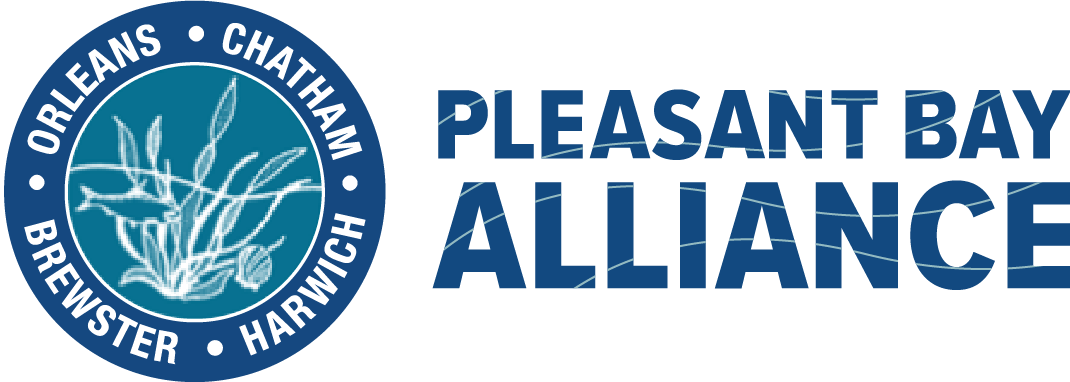← Back to Programs & Projects
Climate Adaptation Action Plan
The Pleasant Bay estuary may experience sea level rise of 4-8 feet by 2100, along with more frequent and intense storms. Water surface temperatures in the Bay may increase 20F by 2050. Nearly 72% of intertidal resource areas could be lost to increased water levels. Salt marsh and eelgrass, which provide habitat, buffer storm surge, filter pollutants and store carbon, are susceptible to changes in water level and water temperature. Low-lying public water access facilities as well as water, wastewater and stormwater infrastructure face threats of inundation due to sea level rise and storm surges. These climate effects threaten our ability to access and enjoy the waters of Pleasant Bay, and they also affect the Bay’s ability to function as an estuary and contribute to the sustainability of our oceans.
The Pleasant Bay Climate Adaptation Action Plan was developed by the Pleasant Bay Alliance and technical and community partners from 2022-2024 with funding from the Massachusetts Vulnerability Preparedness Action Grant program.
The goal of the Climate Adaptation Action Plan is to protect the integrity of estuarine ecological functions, of intertidal and sub-tidal resources, and of low-lying public access points and water protection infrastructure in and around Pleasant Bay from climate-induced adverse effects.
Read the Climate Adaptation Action Plan here.
Core objectives of the CAAP are:
1
2
3
YEAR 1: Assess Climate Threats and Resilience Potential
- How Sea Level Rise is Estimated
- Storm-tide Pathways Report (Center for Coastal Studies)
- Barrier Beach Vulnerability Assessment (Center for Coastal Studies)
- Projected Climate Impacts to Intertidal Resources (Center for Coastal Studies)
- Projected Climate Impacts to Public Access Sites and Stormwater, Water Supply and Wastewater Infrastructure: Selection of Case Studies and Establishment of Threshold Elevations
- A Site Selection Model for Eelgrass Restoration and Enhancement for Pleasant Bay
- A Site Selection Model for Saltmarsh Restoration and Enhancement for Pleasant Bay
Reports
Barrier Beach and Inner Shoreline
Stormtide pathways report – Center for Coastal Studies
Barrier beach vulnerability interim report – Center for Coastal Studies
Intertidal resources interim report – Center for Coastal Studies
Public Access and Water Protection Infrastructure
Selection of Case Study Sites and Establishment of Threshold Elevations
Salt Marsh and Eelgrass Restoration
A Site Selection Model for Eelgrass Restoration and Enhancement for Pleasant Bay, MA – Novak and Plaisted
YEAR 2: Development of a Climate Adaptation Action Plan
Development of the CAAP was focused on four main tasks:
- Assessing climate impacts to the barrier beach and inner shoreline, and identifying appropriate planning, monitoring or resilience measures.
- Assessing climate impacts to public access facilities and water, wastewater and stormwater infrastructure, and developing conceptual resilience plans for selected sites.
- Assessing climate impacts to the health and sustainability of two species critical to the functioning of the estuary: eelgrass and salt marsh; and developing measures to protect and these resources.
- Engaging the broader community in building awareness of climate threats facing Pleasant Bay and other coastal resources areas, and conveying the community resilience priorities.
Reports
Climate Adaptation Action Plan (2024)
Barrier Beach and Inner Shoreline
Nauset Barrier Beach Vulnerability Assessment – Year 2 (Center for Coastal Studies)
Public Access and Water Protection Infrastructure
Recommended Adaptation Measures for Public Access and Water Protection Infrastructure (Wright-Pierce)
Salt Marsh and Eelgrass Restoration
Preparing for Climate-adapted Eelgrass Restoration in Pleasant Bay (Novak/Plaisted)
Salt Marsh Resiliency Assessment (Fox/Cape Cod National Seashore)
Community Engagement
–Click here for Climate Adaptation Community Survey Report
– Click here for presentations from the Oct. 21 Community Forum
– Click here for the video from the Oct. 21 Community Forum
– Click here for links to our new climate adaptation infomercials: Jackknife Harbor Beach Living Shoreline Project, Meetinghouse Pond Landing Resilience, Harden Lane Pump Station Resilience, Eelgrass Restoration
